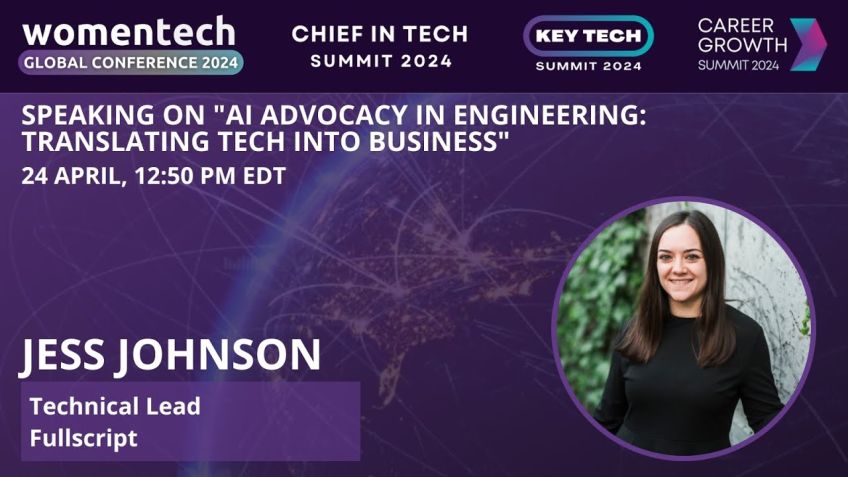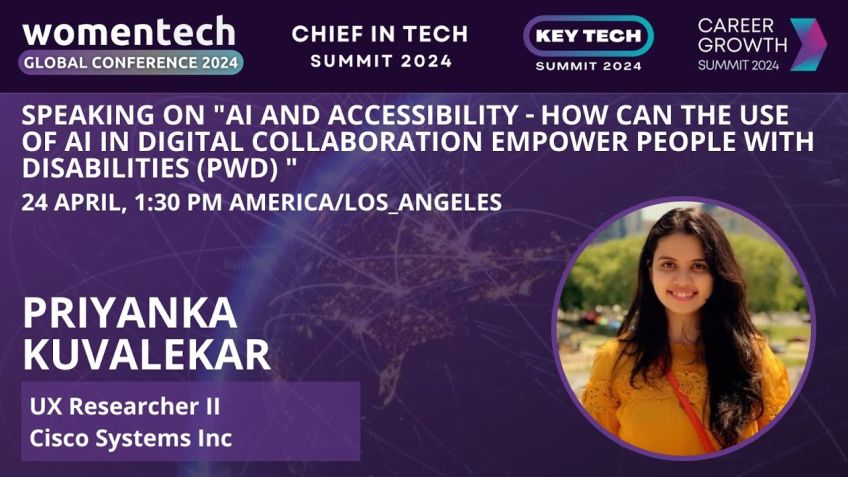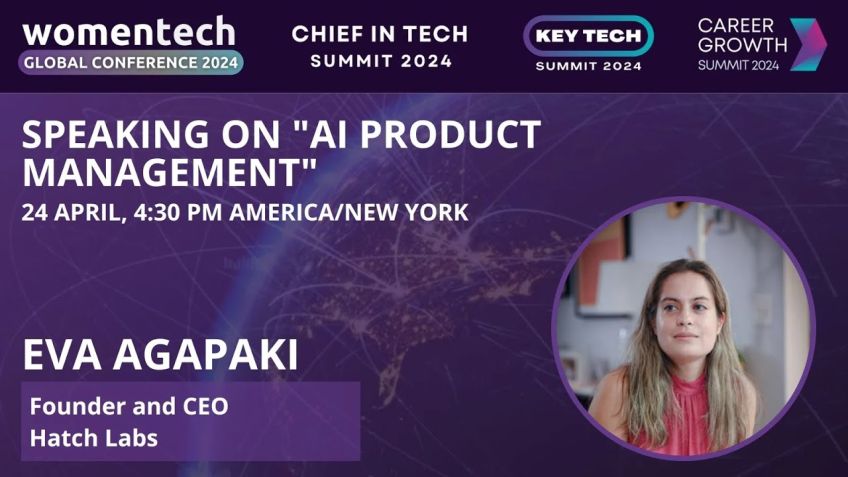Elinor Honigstein - Impact Investing and Social Entrepreneurship- unpacked
Something to Offer to Gender Equality and Social Impact in Tech
Hello there! I hope to offer you some useful insights and inspiration on the topics of social impact and gender equality in tech as part of this global conference. I am Eleanor, and as a mother and a professional in the tech industry, these areas are especially significant for me.
A Journey to Social Impact Tech Ventures
Zinc ZC, a London-based incubator, gave me my first taste of the power of technology to address pressing issues around the globe. As someone who is passionate about the intersection of technology and social change, it opened my eyes to the potential for tech to make a difference in areas like education, sustainability, and mental health.
Why are Women Important in Tech?
We all acknowledge that representation of women in the tech industry is scarce. Yet, it is important to talk about why exactly women should be a part of this field. Tech has become an integral part of our lives and it influences how we communicate, work, and even entertain ourselves. Therefore, having diverse representation in the tech workforce plays a crucial role in creating positive societal impacts.
Need for Gender Equality in the Tech Industry
Gender equality is a fundamental human right. The United Nations recognizes this and has set gender equality as one of their 17 Sustainable Development Goals. They aim to achieve full gender equality, including the closing of the gender digital divide, by 2030.
Economic Benefits of Gender Equality in Tech
Moreover, equal gender representation in the workplace offers tangible economic and business benefits, such as improving problem-solving abilities, promoting innovation, and driving higher sales and profit. Excluding women from a significant role in the industry results in missed opportunities for businesses and society as a whole.
Towards Gender Equitable Tech
Moving towards a tech industry that supports gender equality involves three connected segments:
- Highlighting technological innovations that improve the lives of women and girls.
- Promoting creations made by women that cater to the needs of the entire population.
- Combating barriers preventing women from holding decision-making positions in the tech industry.
The Power of Technology to Enable Social Change and Gender Equality
Recent technological innovation, especially in the wake of COVID-19, has shown us how tech can improve both women's lives and the world around us. However, while technology is a powerful tool, we must also consider the possible risks and unintended consequences associated with it. Unforeseen problems can arise, such as data protection breaches, rejection by developing countries, or early discontinuation of social impact tech startups.
Overcoming Bias in Tech
Another challenge we encounter is the inherent gender bias in tech products and services. From Amazon's AI recruiting engine showing a preference for male candidates to the underrepresentation of women in tech-related jobs, the tech industry has a long way to go in promoting gender equality.
The Role of Organizations and Individuals
Both organizations and individuals have roles to play in promoting gender equality in tech. Organizations can improve the number of women in leadership and decision-making positions whereas individuals can facilitate workshops, build networks, and invest in ventures that promote gender equality.
Unleashing the Power of Gender Lens Investing
A class that I recently took in social innovation and impact investment introduced me to gender lens investing, which is an approach that takes gender-based factors into account throughout the investment process. This approach can be used to both promote gender equality and to support companies doing good through their corporate social responsibility initiatives.
Conclusion
Gender equality is a collective effort. Achieving the ambitious Sustainable Development Goals, specifically the goal on gender equality and women empowerment, requires systematic change that involves all stakeholders, including institutions, the public sphere and our individual communities. Our small actions can ultimately make a big difference.
To quote Anita Roddick, founder of The Body Shop, “If you think you are too small to have an impact, try going to bed with a mosquito.”
Video Transcription
It's, it's really great pleasure to be part of this global conference. Um And I really hope that the talk today will provide some useful information and inspiration on the topic of social impact and gender equality in tech. Um These are areas that are very close to my heart.
Um So I'm just gonna start my presentation, hopefully you can all see it. Um So I'm Eleanor. I'm based in London, uh originally from Israel. I'm a mother of three girls. Uh And I've dedicated nearly a decade to working with social impact organizations, helping them develop uh relationships and partnerships with the communities around them. Now, a few years ago, I started working for Zinc ZC. That's a London based incubator that build uh social impact tech ventures.
And this really opened my eyes to the way technology can be used as a, as a powerful tool to address the world's most pressing issues. Anything from education, sustainability, mental health. Uh And also it opened my eye to the hard work of both founders and investors in balancing purpose and profit. And now I work at uh at the UK government venture called UK Israel tech hub where we build tech partnerships between the two countries and because I'm super excited about the power of technology to make disruptive change happen. I'm also leading on our societal initiatives and trying to increase business and investment opportunities for women and minorities across both countries. I've also recently been part of the United Nations women delegation and le um effective participation in public life in tech, in trade, women safety, education and economic.
So I'm very happy that I get the chance today to, to really kind of bring those two worlds together. Um The women, equality and technology. Now, what are we gonna talk about uh today? Um You know, we, we all know that the pipeline of women in tech is quite narrow. This is, this is not news to you. I'm sure I've read many reports and articles about it. I spoke to female founders and V CS and discovered that there are clear differences in the access women have to, to the technology industry. And you can see here some of the um of the data now in developing countries, it's even worse because um over 300 million because the internet, the men are just really, really um defer data, but these are really dry numbers. And I was curious to understand what do they mean for our girls and why is it so important to talk about it? Why do women need to be part of this field? So, first of all, technology is a field that permeates every, every part of our lives. Really, it shapes the way that we communicate, the way that we, we work that we play, that we consume.
So having a diverse representation both in the tech workforce is is and and also in entrepreneurship is really really important to, to creating that positive impact on gender equality in society on the whole, which is uh mental human, right? If, if you think about it and this is why also the the United Nations um targeted gender equality as one of their 17 Sustainable Development goals and working really hard um to to make sure that by 2030 every woman and girl will enjoy full gender equality including closing the gender digital divide.
Now, another reason not that equal gender representation in the workplace benefits economy and business increases group problem solving abilities, drives innovation, higher sales revenues and profit. So by by not having women playing a stronger role in the industry, businesses and society are actually missing out.
Now from my experience working in this field to make a difference, giving attention to gender imbalances within the tech sector, which we call applying a gender lens in three segments and they're all connected. So the first one is shining a light on technological innovation that improves the lives and adds value for women and girls. The second one is promoting innovation creating by women that can produce products that reflect the needs of the entire population tackling barriers, preventing women to act in decision making positions in the tech industry, starting from education, uh recruitment retention.
So today, I'm just gonna touch on those um kind of three elements in the time that I have and I'll try and give as many examples as I can. Uh And uh I'll answer your questions also towards the end. But it's also important for me to note uh that it's not all negative talk. Yeah, it's, it's not just about the lack of access, but it's more about the opportunities and the positive impact that we can make uh in this space. So let's start with uh a critical look on the role uh that technology innovation has on, on really enabling social change and gender equality. And I say critical because it is easy to look at social impact tech as only positive and I came into that field, you know, feeling very, very positive and thinking all is rosy and, but we must not really overlook uh the risks. So we are beginning to see purpose driven technological innovation popping up especially after COVID uh that improves the lives and the world really around us. Um Specifically when we talk about women, anything from mobile banking ventures that facilitate women's entrepreneurship, uh elearning platforms that actively increase women participation, a wearable an app that I used to prevent violence against women.
This is really what we call social innovation, which is a kind of the new. Uh and by definition, you can read it here. It's a novel solution to a social problem that is more effective, efficient, sustainable than existing solutions. And where the value um that's created is primarily to society rather than to private individuals. But we do need to ask ourselves what, what is efficient, what is effective, who defines the social value or positive impact? Because although technology is a powerful tool to break trends and increase opportunities, it can also bring risk and unintended consequences. So firstly, it can be rejected or not adopted by developing countries and actually then increase uh the divide as a result. It can also create new unforeseen problems.
For example, data protection breaches. Um Also, we need to understand that innovation in itself is not enough because to make positive change uh for society, we really need successful implementation at a large scale. And unfortunately, we often see many many social innovation start ups that lead much shorter lives than our average start up and really discontinued after just a few years. So the key question is how can technology have really a broad and positive impact? So from conversations that I've had over the years, the first step is about conducting a thorough needs assessment to ensure that the needs of our beneficiaries are being met. So for example, an unaffordable technology will not have the desired impact because no one will actually be able to purchase it. Then it's about developing a sustainable business model from the outset to increase the chances of success. And finally, um it's about moving away from Rene ship and, and what do I mean by that? So some say that we are overly focused on the heroic social entrepreneurs who want to save the world, but actually may not have lived those problems themselves. But if we want to create solutions to global challenges, these solutions need to be grounded in deep understanding of, of those problems and be based on collaborative and learning.
So for example, rather than um focusing on given technology or on a founder to drive how a new social impact tech is designed and only then figuring out how to entice women to adopt it. We need to ensure that female users are at the center of the planning and involve at really critical stages of the design uh and deployment uh as innovators as developers and really drivers of the process. So my point here is really about the need to recognize the great opportunities but also the challenges of rapid social innovation for gender equality, which then leads me to my next point about inherent bias in tech products and services and, and really to demonstrate that point, uh I want to remind you of this fairly old riddle um a little bit morbid.
So I apologize for that. So a father and son are in a car crash that kills the dad. Now the son is rushed to the hospital and just as he's about to go on the operation table, the surgeon says I can't operate that boy is my son. So why can the surgeon operate on that boy? Um, II, I wonder if, if, you know, I mean, I'm sure some of, you know, and, uh, it's, uh, it's, it's quite an old one. But, you know, I, I actually told them my daughter this the other day people hesitate because the first instinct tells them the surgeon must be the boy's father. Now, of course, the surgeon could be the boy's mother, but it's not often people's first response. And this example illustrates how deeply gender bias is embedded in our society. Um Innovation, you know, it's, it's whether it's research technology, social is widely viewed as being gender blind or gender neutral. Uh a place where male and female do not matter. But this is the first misconception that we, we need to confront because innovation occurs within systems of socially constructed and shared beliefs about men and women, their behaviors and roles. So there is a risk that this inherent bias will translate into data sets was not in rating candidates in a gender neutral way. And in fact, the new recruiting Age engine did not like women.
And this was because the models were trained to vet applicants or, or determine what good or successful applicants look like by observing patterns in submitted resumes from over the last 10 years. And of course, you know, the majority of these came from men. So in fact, Amazon systems have taught itself to prefer male candidates. So risk of gender bias in systems like A I or or the other deep tech. Um If we take the UK as an example, the the government here last year released its review into bias in algorithm with recommendation to support fairness and equality. And the EU also published a proposal for a regulation on artificial intelligence called the Artificial Intelligence Act.
So this is just an example uh to show the significant development in the promotion of responsibility A I, but also to show how it's important for cross sector collaboration to happen between the public and the private when it comes to, to building effective solutions to challenging social uh issues.
So diversity in tech, of course, uh women working in in the technology industry is another way that we can tackle these biases, which brings me to the last pillar. Um We all know very well that women are not plugged into the tech workforce and often fall behind securing funding or senior positions. But before we talk about how we can level the playing field, we need to understand the root of the problem. Um So again, from speaking to to many people and and kind of key figures in the industry. Education is the first hurdle that women meet on their path to tech, there's a noticeable gap between girls and boys that study STEM subjects in schools. And this leads of course to a significant underrepresentation in the tech industry where only a quarter of the people working in STEM in the UK are female. So we definitely need to promote access for women to learning opportunities and academic excellence in STEM. And also out of the handful of young women who studies them, only 26% go on to work in the tech compared to 40% of men. So partly because of lack of female role models, you think about it, if you go to an interview or to kind of a recruitment day and all you see there is men, you can struggle to see yourself as part of the kind of fitting the culture.
And also because there is often a kind of a tight knit community of men which may then alienate the female audience. Uh Another reason is that women are underrepresented in V CS, which may then limit their access to funding um due to lack of strong network and warm introduction. But what I'm more interested is what we can do. What can we do? Um you know, in my view, everyone can take some action to ease barriers for women, power, women forward to play a significant part in the tech industry. Now, on an organization level, it's quite clear, improving number of women in leadership and decision making positions in tech companies and this includes also mature women women returners, this is really key. So for example, the global uh software company S A has built tools for detecting and preventing unconscious biases when it comes to hiring and promoting talent. But what is more interesting is what we can do on a personal level and this can be on a really small steps. And here I'd love to, to bring examples from, for myself um just from my own experience and my kind of small steps to do to help. So I've become a qualified and remarkable workshop, facilitate facilitator.
And this is a Google initiative set out to help women and underrepresented communities to be more vocal about their achievements and have been delivering workshops voluntarily for over 100 and 50 women in tech globally. I'm also the co-leader of the London chapter at AW where I'm able to connect and support executive women across the world. Um And also one of the initiatives that I'm very, very proud of is having lunch, launched the UK Israel women leading innovation network where we support women across both countries through access to mentors, financing business development and many many more opportunities that we can uh help them via the connection in the British Embassy in Israel.
And finally, if, if you look at the impact investing world as an option, I've taken a virtual course in social innovation and impact investment. And a lot of this kind of course is also based on, on the learning from that. And it's really opened my eyes to gender lens investing, which is another way of of making an impact in in this space. So to those of you who who don't know uh gender lens investing, very brief. This is an approach that takes into account um gender-based factors across the investment process to advance gender equality. And this investing approach can be within two broad categories. First one is investing in companies that have the intent to address gender issues or promote gender equality.
So investing in women, owned or women led uh enterprises investing in enterprises that promote workplace quality in staffing, management, boardroom representation, or for example, apps that use personalized and adaptive learning to teach digital skills at all levels and investing in um local marketplaces and online communities for women or perhaps also online solutions that increase the availability of relevant content.
Uh For for example, reproductive health or combating gender based violence. And the other kind of category for a gender lens investment is uh investing in enterprises that do good for society, for example, through their corporate social responsibility. Um but those enterprises not necessarily considered classic impact investments.
So this could be really any any enterprise and we want to also support these type of companies and help them bring their impact methodologies into their mainstream activities. And here by the way, our contribution does not have to be just capital investment but also through strategic partnerships.
Um business development mentoring of the fund. So I just like to close um achieving the ambitious sustainable development and specifically the goal on gender equality and women empowerment requires systematic change that involves all stake, not just institutions, but also the public sphere.
Um our small communities and, and ourselves. And I really hope that my talk today uh inspired you even just a little to take action and to do your small bit to make a difference. Uh And as the saying goes, if you think you're too small to have an impact, try going to bed with a mosquito. So uh.





